Abstract
Treick, R. W. (Indiana University, Bloomington), and W. A. Konetzka. Physiological state of Escherichia coli and the inhibition of deoxyribonucleic acid synthesis by phenethyl alcohol. J. Bacteriol. 88:1580–1584. 1964.—The effects of concentration of phenethyl alcohol (PEA) and the physiological state of the cells on inhibition of macromolecular synthesis in Escherichia coli were investigated. Deoxyribonucleic acid (DNA) synthesis by cells of E. coli from the maximum stationary phase is completely inhibited by 0.32% (v/v) PEA immediately upon addition of the inhibitor, although there is a net increase in the synthesis of ribonucleic acid (RNA) and protein. However, DNA synthesis in cells from the exponential phase is inhibited only after an increase which corresponds to 1.4 to 1.6 times the amount of DNA present at the time of PEA addition. In a randomly dividing culture, this increment of DNA synthesis presumably represents completion of the DNA replication cycle initiated at the time of PEA addition. By programming the addition and removal of PEA, DNA synthesis can be made to proceed in stepwise increments corresponding to doublings of the DNA. The data indicate that the DNA being replicated at the time of PEA addition completes the replication cycle and, although there is net synthesis of RNA and protein, no initiation of a second cycle of DNA replication occurs until the removal of the inhibitor.
Full text
PDF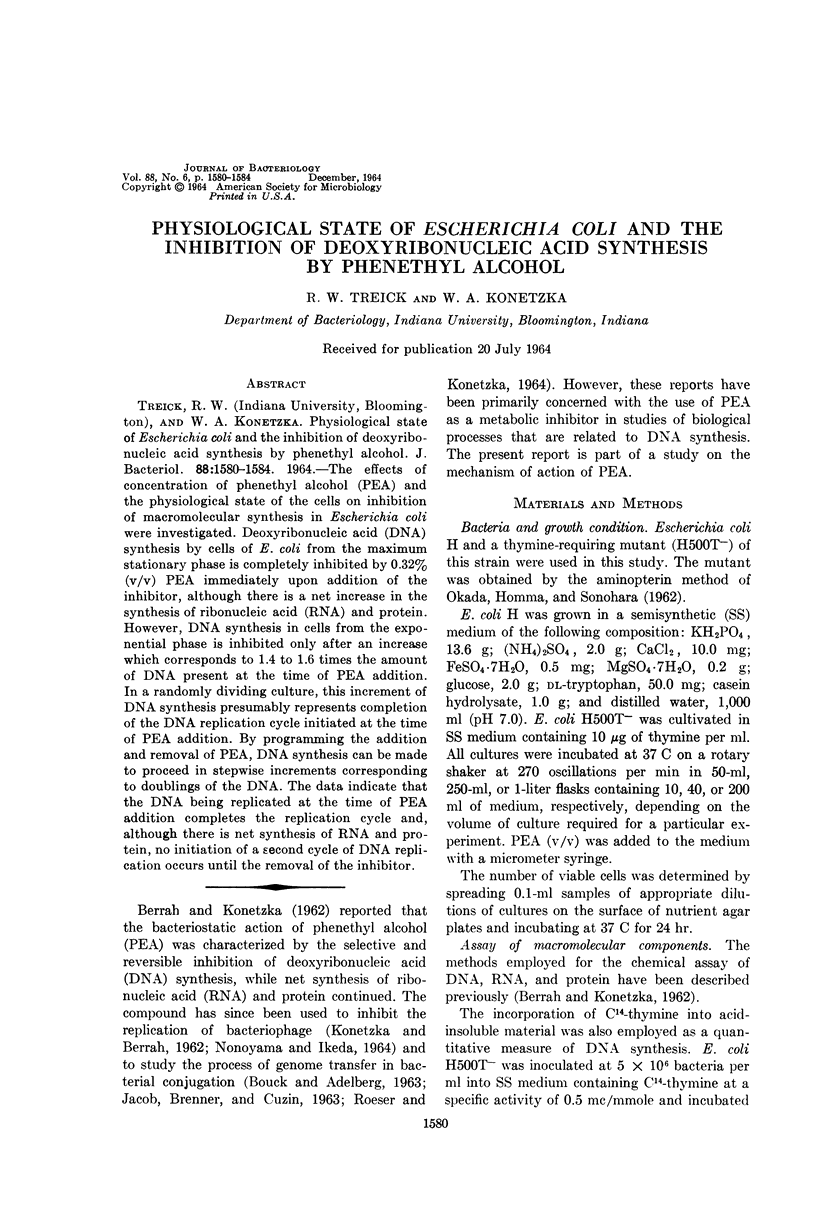
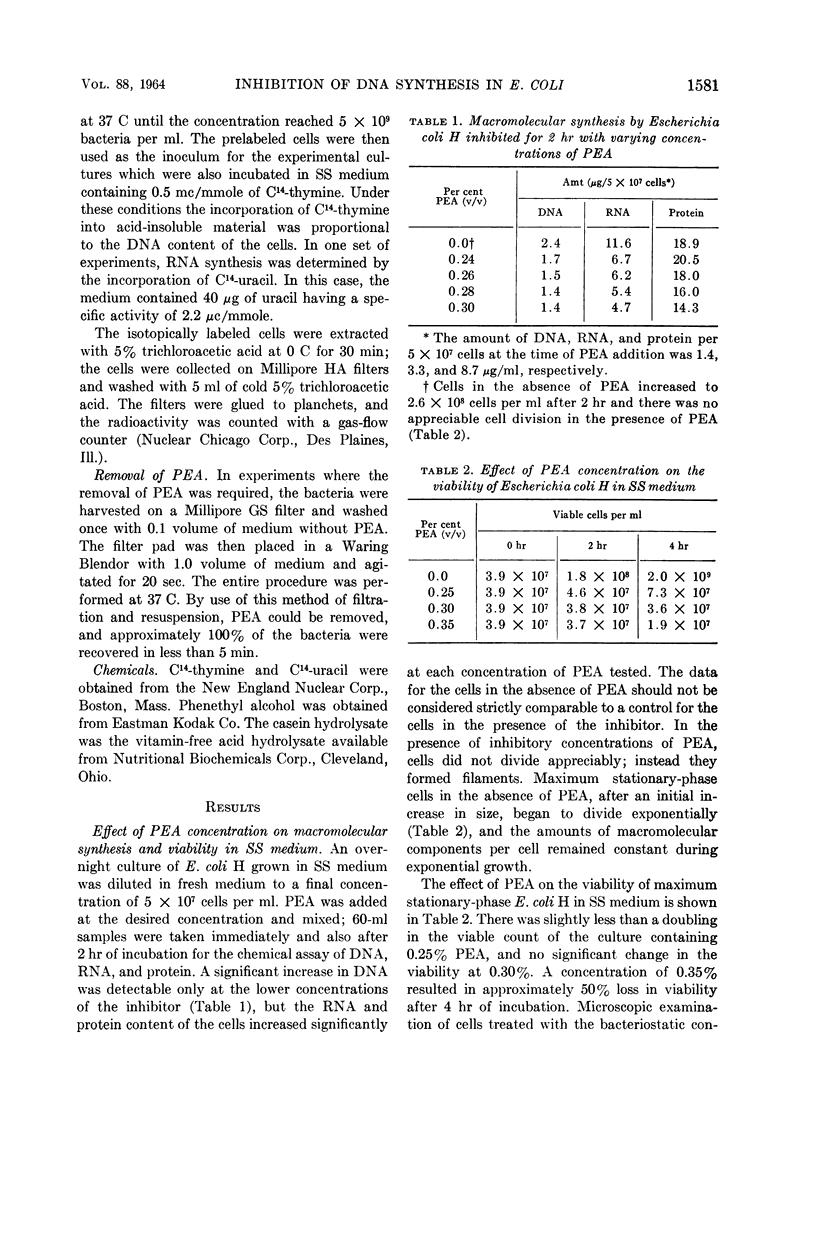
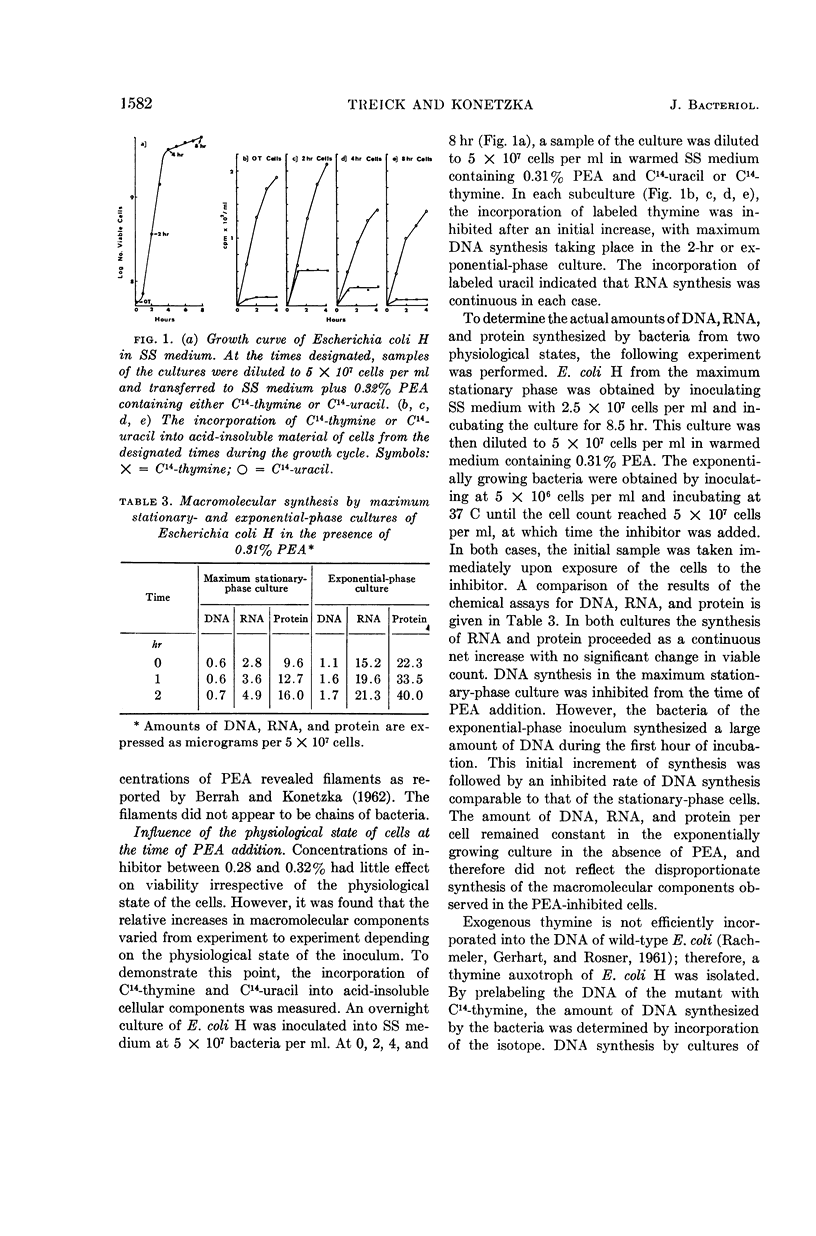
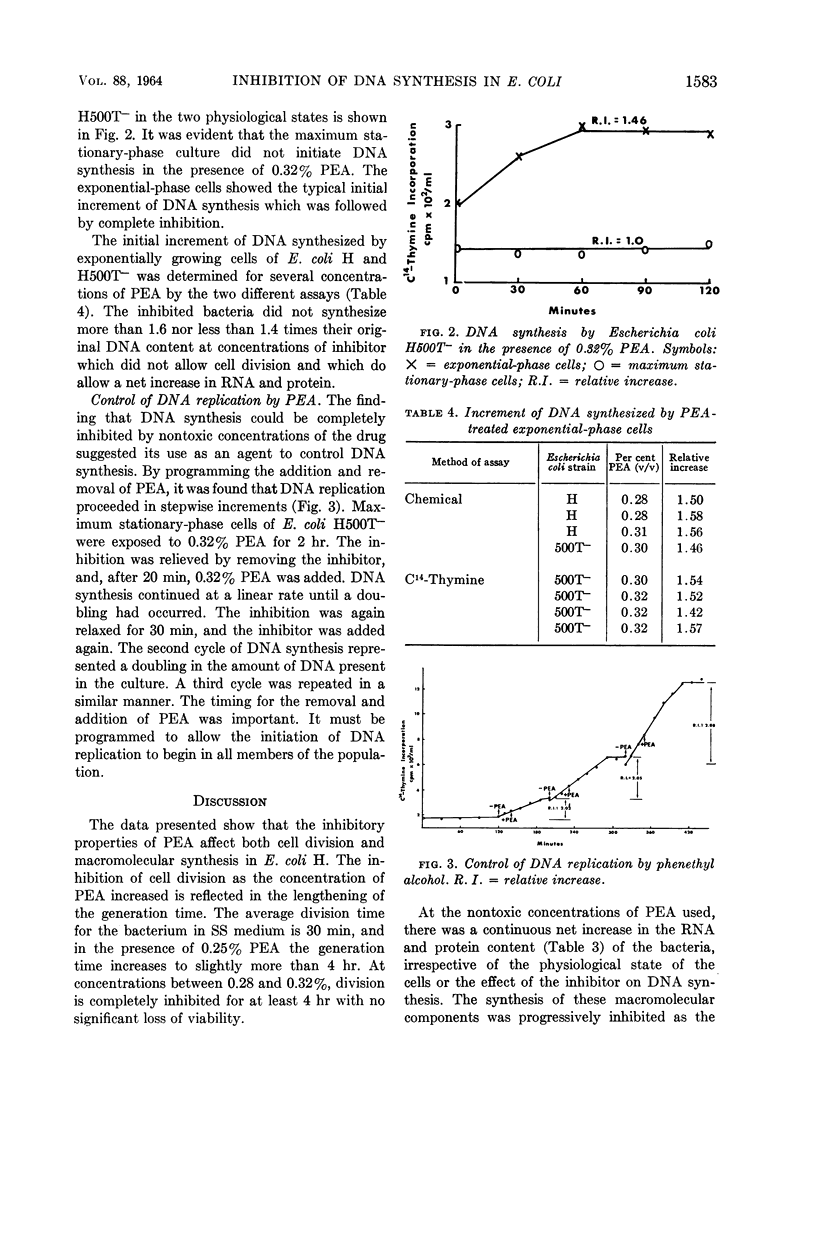
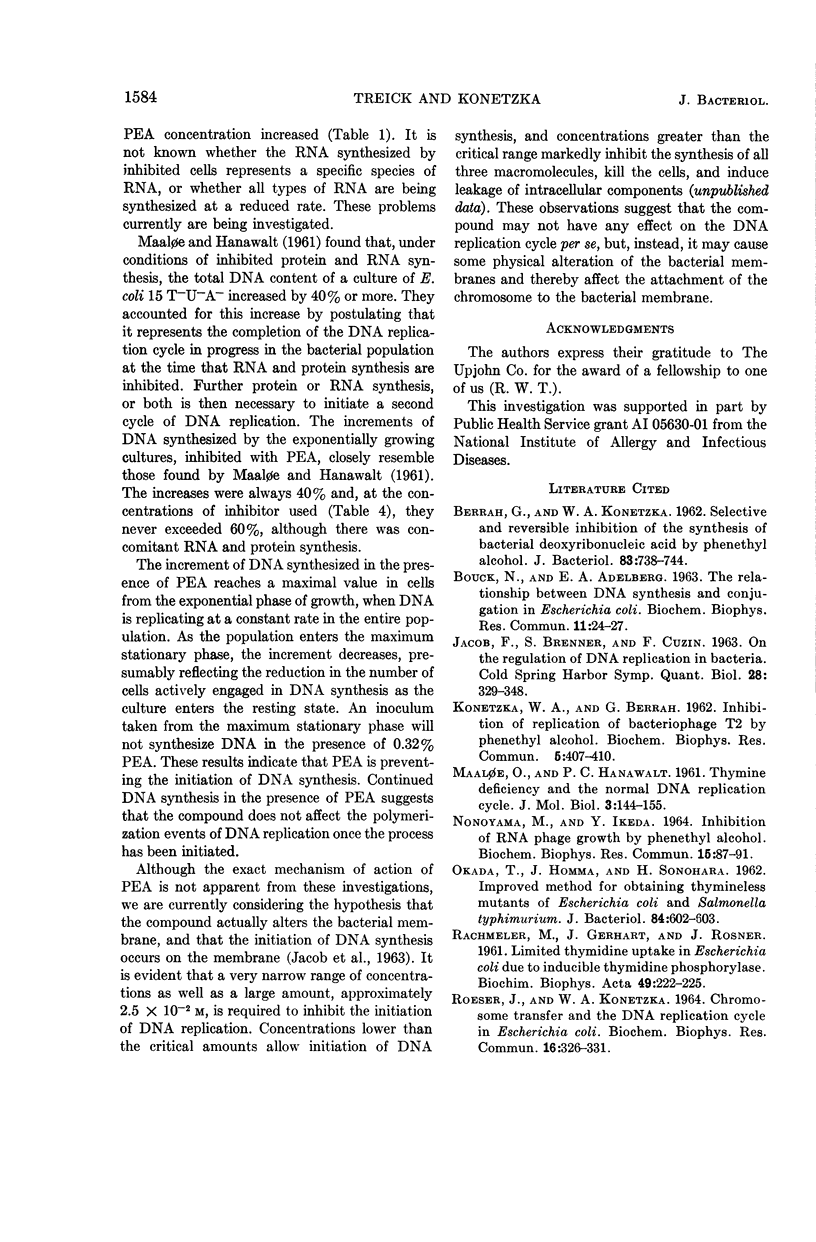
Selected References
These references are in PubMed. This may not be the complete list of references from this article.
- BERRAH G., KONETZKA W. A. Selective and reversible inhibition of the synthesis of bacterial deoxyribonucleic acid by phenethyl alcohol. J Bacteriol. 1962 Apr;83:738–744. doi: 10.1128/jb.83.4.738-744.1962. [DOI] [PMC free article] [PubMed] [Google Scholar]
- BOUCK N., ADELBERG E. A. The relationship between DNA synthesis and conjugation in Escherichia coli. Biochem Biophys Res Commun. 1963 Apr 2;11:24–27. doi: 10.1016/0006-291x(63)90021-4. [DOI] [PubMed] [Google Scholar]
- MAALOE O., HANAWALT P. C. Thymine deficiency and the normal DNA replication cycle. I. J Mol Biol. 1961 Apr;3:144–155. doi: 10.1016/s0022-2836(61)80041-7. [DOI] [PubMed] [Google Scholar]
- Nonoyama M., Ikeda Y. Inhibition of RNA phage growth by phenetyl alcohol. Biochem Biophys Res Commun. 1964 Feb 18;15(1):87–91. doi: 10.1016/0006-291x(64)90108-1. [DOI] [PubMed] [Google Scholar]
- OKADA T., HOMMA J., SONOHARA H. Improved method for obtaining thymineless mutants of Escherichia coli and Salmonella typhimurium. J Bacteriol. 1962 Sep;84:602–603. doi: 10.1128/jb.84.3.602-603.1962. [DOI] [PMC free article] [PubMed] [Google Scholar]
- RACHMELER M., GERHART J., ROSNER J. Limited thymidine uptake in Escherichia coli due to an inducible thymidine phosphorylase. Biochim Biophys Acta. 1961 Apr 29;49:222–225. doi: 10.1016/0006-3002(61)90888-5. [DOI] [PubMed] [Google Scholar]
- Roeser J., Konetzka W. A. Chromosome transfer and the DNA replication cycle in Escherichia coli. Biochem Biophys Res Commun. 1964 Jul 1;16(4):326–331. doi: 10.1016/0006-291x(64)90034-8. [DOI] [PubMed] [Google Scholar]


